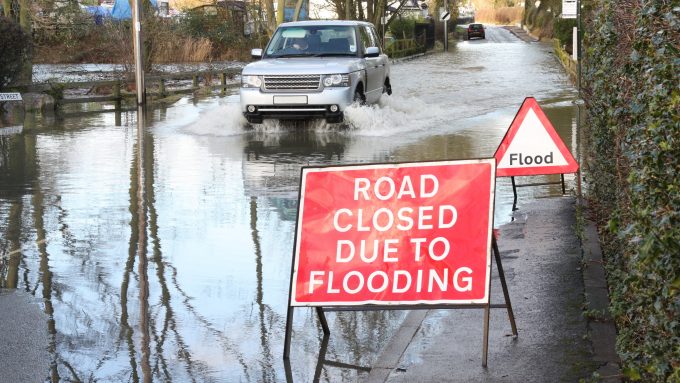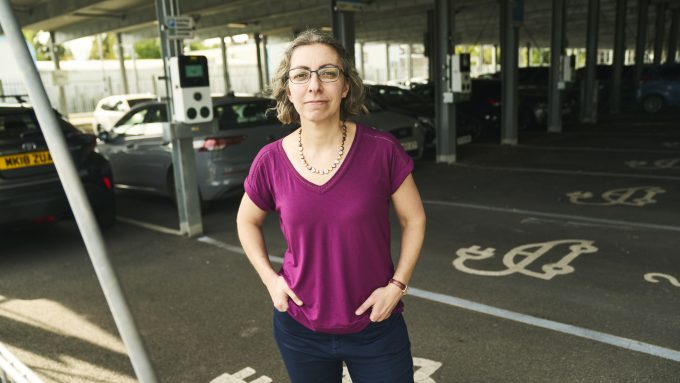
Zero Emission HGV infrastructure: how can we ensure safe deployment?


Traditional fuels are being replaced with battery electric and hydrogen, and these new technologies must be deployed at pace if we are to begin to mitigate the effects of global warming.
Currently, safe refuelling is often taken for granted by most HGV drivers. However, insufficient credit is given for the huge amount of work that goes on behind the scenes to make these potentially hazardous operations safe.
Standards and codes of practice have been developed over decades to ensure petrol and diesel vehicles can be refuelled safely. These have been developed through collaboration with organisations representing the petroleum, automotive and chemical industries, with further input from academia and consumer groups.
The development of these standards and codes would not have been possible without appropriate forums for industry experts to meet and openly discuss technical issues and determine acceptable practice, documented as codes of practice and standards. Impacted organisations are required to fund these activities, along with any experimentation to provide the evidence base to prove that proposed codes and standards are effective.
Experts’ competency is developed through first-hand experience working in technical and quality teams, with additional support from technical establishments such as research and development centres.
Some of the essential ingredients for the development of meaningful standards and codes can be summarised as follows:
- The availability of sufficient experts covering all parts of the supply chain
- The availability of existing knowledge from academia, existing standards or industry activities
- Representation of the users of the codes and standards
- A shared objective to prevent or mitigate harm
- A safe and trusted forum to openly discuss issues and form a consensus
- A willingness by organisations to accept some restrictions
- A mechanism to fund essential evidence gathering activities
The current standards and codes were not developed overnight, and in many cases suitable control measures were only identified in response to serious incidents. For future developments, this approach should be reversed, with control measures proactively implemented to prevent the seriously harmful incidents occurring in the first place.
To achieve this, we need everyone in this transitioning world to be able to think ahead and develop the control measures needed to prevent significant harm. This requires a level of competence in the people who are involved in the planning, designing, installing, using, maintaining and decommissioning of new charging and refuelling infrastructure.
Increasing knowledge of hazards
Hydrogen and battery electric pose different hazards to petrol and diesel. However, with the correct control measures there is no reason that they should be any more dangerous. We have extensive knowledge of them and how to use them safely. But we have to make sure that this knowledge is available in an easy to digest form.
Connected Places Catapult and standards body BSI have spent several months researching existing regulations, standards and codes of practice. There is a lot of existing knowledge and requirements to help ensure safe deployment, but it is fragmented. A soon to be published report will signpost stakeholders to this some of this knowledge.
The report will continue to be updated as the zero-emission heavy goods vehicle and infrastructure demonstrations (ZEHID) progress, and new learnings are discovered both from this programme and other related programmes across all transport sectors.
The Catapult is also working in partnership with BSI to fill some of the gaps in standards uncovered during research, through the development of new national standards or the contribution to ongoing international standardisation activities.
Ensuring skills are sufficient
As this is a new industry, it will take time for adequate practice to be agreed and documented. It is therefore important that risks and hazards are evaluated, and specific control measures deployed for each facility and operation separately because they are all likely to be different to some degree.
Designers will not find the answers in the standards and codes for every application, therefore skills in quantitative risk assessment are essential. For example, being able to model unplanned events so that adequate separation distances can be calculated.
There is a need to reskill, upskill, and establish links with academia to reshape academic programmes to include skills related to these emerging technologies such as:
- Design and engineering skills are needed in the deployment and maintenance industry and regulators.
- Hazard identification skills so that effective control measures can be designed and deployed
- Layers of protection analysis so that safe operations are not reliant on single control measures
- Effective communication of control measures to users and emergency responders
- Digital skills to combat cyber threats and to effectively manage and monitor safety and reporting systems
Managing behaviours
Safety focused organisations tend to have a strong culture of operations integrity – this means supporting individuals when they make correct safety decisions that can be unpopular because they may cause delays, or cost overruns, or worse.
People do not set out to make mistakes or make bad decisions, however during project related activities people do get into situations where time and financial pressures – or trying to recover from previous bad decisions – can create a pressured environment that facilitates further bad decisions.
Our work has shown that a poor initial decision to choose a site for a new refuelling facility that is the wrong shape or too small, for instance, can put pressure on designers to solve issues that should not need to be solved. This can cause compromises to be implemented that do not align with best practice.
The site footprint of a diesel refuelling station is relatively small due to diesel being stored underground. A typical diesel HGV fuelling station can deliver approximately 1.2 MW of useful power from each refuelling bay. Currently, electric chargers deliver approximately 250 KW, so about five bays are required to deliver a similar amount of power. In addition, significant space may also be required for sub-stations, local renewable power generation, and battery storage systems to smooth power demand from the grid.
Hydrogen refuelling stations can deliver a similar power to a diesel refuelling bay. However, for various reasons, hydrogen must be stored above ground. This significantly increases the size of a site required.
Public refuelling sites for diesel HGVs are drive-in, drive-out and this best practice should be carried through wherever possible. However, this seems difficult to achieve in practice for some electric charging sites. Designers should consider staggering charging bays so that adjacent vehicle batteries are not too close to each other.
Designers also need to consider changes in behaviour of vehicle operators, for example allowing space for welfare facilities since vehicles will be stationary for longer periods. Space should also be provided for emergency services to respond to an on-site incident, for example, access to cool a vehicle battery fire or to segregate a vehicle away from other sources of energy.
Despite the new challenges presented by battery electric charging, and hydrogen refuelling infrastructure for HGVs, lessons can be learned from existing fuelling stations to ensure safe deployment. These zero emission technologies are not novel, and competency has been developed over recent decades from various adjacent industries.
It is essential that we continue to support and fund the necessary forums for best practice to be developed.
To see how Connected Places Catapult is supporting the transition, click here.
Brian Macey is an Affiliate with Connected Places Catapult.
Recommendations on designing charging sites for battery electric heavy goods vehicles are detailed in new standard document BSI Flex 2071, which is out for public consultation until 12 July.





